It is not difficult to hear the voice of a healthy waterway — if you are in the habit of listening. A sun-drenched early morning elicits a symphony of sounds from a pristine trout stream. A sudden splash reveals a startled muskrat. The quiet slap of an oar gives away a fisherman as he settles on a spot to drop his line and meditate. Heard on a regular basis, these voices become an essential part of the human experience. And when they disappear, the ensuing silence can be deafening.
Forty years ago, our waterways were deafeningly silent. So the nation’s leaders suspended partisan politics — and overrode a presidential veto — to legislate one of the most innovative and forward-thinking federal policies. In 1972, Congress enacted amendments to the Federal Water Pollution Control Act that are collectively known as the Clean Water Act.
The primary goal of the Clean Water Act is to “restore and maintain the chemical, physical, and biological integrity of our nation’s waters.” Considered one of the most important environmental laws in the United States, the Clean Water Act embodies the philosophy that major environmental problems can best be solved with a strong federal-state partnership in which the federal government sets standards and states assume responsibility for implementing and enforcing those standards. It also underscores a long-held American belief that clean water and air and healthy wildlife populations are part of our national heritage.
By setting enforceable water quality standards, establishing a system to regulate pollution, and funding sewage treatment infrastructure, this remarkable piece of legislation has arguably been the single most important factor in the restoration and recovery of thousands of miles of waterways across the nation. Lakes once considered all but lifeless now support thriving fish and waterfowl populations. Streams and rivers that once functioned primarily as conduits for sewage now attract hordes of recreational swimmers and anglers.
Yet despite 40 years of progress, state legislatures and the U.S. Congress are facing increasing pressure from special interests to weaken and even eliminate protections that have proved so critical to safeguarding the health of our nation’s waterways. And the public outcry that once spurred action is largely missing today.
River of Fire
In the early 1900’s, industrial productivity was growing rapidly, and the United States enjoyed unprecedented economic success. Like the economy, the nation’s land and natural resources seemed boundless. Little thought was given to the capacity of waterways to absorb the streams of waste pouring into them. The Rivers and Harbors Act of 1899 was the only legislation in place at the time to protect America’s water quality, and it served solely to prevent pollution from threatening the use of the nation’s navigable waterways to move goods from place to place.
Public concern about the declining state of the nation’s waterways was voiced as early as the 1920’s, when post-war America discovered the benefits of outdoor recreation. As Americans increasingly participated in recreational hunting, fishing, and boating, they also become intimately acquainted with the harmful effects of industrial pollution on the nation’s streams and wetlands. For the first time, the American public began to place an intrinsic value on the health of waterways apart from their function as conduits for waste.
A New League
In 1922, shock and concern over dying streams prompted sportsmen to form the Izaak Walton League of America and take up the cause of clean water. The League quickly became one of the leading voices speaking out against the wanton destruction of America’s waterways. Tired of state inability and reluctance to address pollution spilling into the nation’s waters, the League appealed to the federal government to step in.
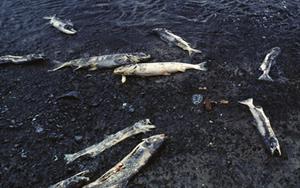
League leaders testified before Congress that water pollution “has so entrenched itself in America that only by concerted national action can it be prevented and eliminated.” In 1934, League Executive Director Ken Reid arranged a pollution conference in Washington, DC, with Secretary of War George H. Dern (who oversaw the Army Corps of Engineers) and U.S. Senator Augustine Lonergan of Connecticut. The expert testimony and evidence presented at the Dern-Lonergan conference served as the basis for the strongest pollution control proposal submitted to Congress at that time — a proposal that would eventually underpin the very goals and aspirations of the Clean Water Act. One of the most innovative provisions of the League’s proposal was a requirement that sanitary water districts be formed on a watershed basis and not under the control of “arbitrary, political- made boundaries” such as state lines. Strong resistance to tampering with state interests thwarted two decades of League efforts to secure national clean water legislation. But as environmental damage escalated, such appeals could no longer be ignored.
Citizens Call for Action
The fire that broke out on Cleveland’s Cuyahoga River in June 1969 burned for only about two hours, yet it is often described as the spark that ignited public demand for federal action to clean up America’s waterways. Far from an isolated occurrence, the flames that spontaneously erupted on this heavily polluted river that June day followed a series of water quality disasters that galvanized the nation. Nationwide studies in the 1960s revealed high levels of toxins in drinking water, rivers unfit for swimming, contaminated shellfish, record numbers of fish kills, and huge economic losses for the fishing industry. Lake Erie was declared “dead” because water quality was so poor it could no longer sustain aquatic life.
Echoing national concern about the environment, President Richard Nixon ushered in the 1970s by stating that the decade “absolutely must be the years when America pays its debt to the past by reclaiming the purity of its air, its waters, and our living environment.” Two years later, the Clean Water Act was signed into law. The Act significantly expanded the largely ineffectual Federal Water Pollution Control Act of 1948, aiming not only to clean up the water supply but protect the integrity of our nation’s network of wetlands and waterways for posterity as well.
The Clean Water Act
The goals of the Clean Water Act were undoubtedly set high, reflecting a public conviction that water quality should be a federal priority. Congress set forth three broad goals in the Clean Water Act: Restore the biological integrity of the waters of the United States, maximize the use of available pollution-reduction technology, and ultimately reduce pollution discharge to zero.
Earlier versions of federal clean water legislation had tried to regulate polluting industries based on whether or not a waterway was “impaired.” In practice, however, this approach proved ineffective because states could rarely point to a particular industry as the polluter responsible for a waterway’s impaired status. In addition, no enforceable water quality standards had been established.
Rewriting the Rules
The Clean Water Act provided a method for states to define “impaired,” determine which waterways are impaired, and direct funds and programs to clean up those waters. Under the Act, nearly every industrial and municipal discharger is required to obtain a National Pollutant Discharge Elimination System (NPDES) permit, which specifies the type and amount of pollution than an industry or municipality may legally discharge. The law also mandates that states establish water quality standards for all surface waters based on the characteristics and uses of each waterway. If waterways do not meet these established standards, industries are required to further limit their pollution discharges. By making any discharge into a waterway unlawful unless specifically authorized by a permit, the burden of responsibility for pollution control effectively shifted from the state to the polluter. Industries are also required to comply with pollution limits based on the “best available technology.”
Pinpointing Pollution
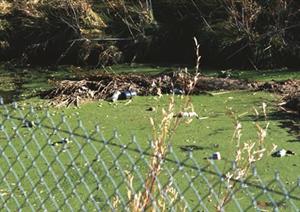
Because industrial and municipal pollution discharges usually come from a distinct and identifiable location — such as a factory pipe — these sources of pollution came to be known as “point-source pollution.” By focusing initially on these point sources, the Clean Water Act made remarkable progress in improving water quality across the country. The discharge of untreated sewage that was commonplace in the 1960s has been largely eliminated. The number of waterways that meet water quality standards has roughly been doubled. Just as remarkable is the fact that these accomplishments happened in a relatively short period of time. When the pace of water quality improvements began to slow, focus turned to sources of pollution that were not so easy to pinpoint.
When the Clean Water Act was drafted, legislators recognized that the origins of some pollution are more ambiguous than a factory pipe or sewage outflow. However, this “nonpoint-source pollution” — including runoff from agricultural lands, construction sites, and urban areas — went largely unregulated and was given relatively little attention during the early years of the Clean Water Act. This changed in the early 1980s, when growing public concern about the high concentrations of chemicals in urban stormwater runoff prompted EPA to launch the Nationwide Urban Runoff Program — the first comprehensive study of urban stormwater pollution across the United States. Studies conducted for this program demonstrated that nonpoint-source pollution was a significant cause of worsening water quality across the nation. Galvanized by public support, Congress once again overrode a presidential veto and approved amendments to the Clean Water Act in 1987 that funded state efforts to address nonpoint- source pollution from farms, factories, and city streets. These amendments also initiated comprehensive watershed programs to clean up the Great Lakes and the Chesapeake Bay.
Wetland Protection
The Clean Water Act also sought to protect rivers, streams, and wetlands from being dredged and filled as a result of development and agricultural expansion. Section 404 of the Act requires a permit to dispose of dredge or fill material in the nation’s waterways, including wetlands. Although Section 404 is credited with the reduction of wetland loss by 80 percent, these protections have increasingly come under attack by those who seek to weaken the Clean Water Act.
Watershed-Wide Focus
In 1992, a renewed focus on watershed-based planning spurred EPA to implement the dormant Total Maximum Daily Load (TMDL) provision of the Clean Water Act. A TMDL is a “pollution diet” for a body of water — a calculation of the amount of a pollutant that a waterway can receive and still meet water quality standards. Because TMDL calculations are complex and a resource-intensive process, this directive was largely ignored by states and the federal government during the first two decades of Clean Water Act enforcement. It wasn’t until EPA issued interpretive guidance in 1997 — largely in response to pressure from lawsuits — that TMDL regulations began to be actively applied. The guidelines call for increased pollution- reduction efforts over the next 15 years by all 50 states, with federal intervention if states fall behind in meeting cleanup goals and deadlines. This revitalized effort to return to watershed-based planning has spawned innovative new approaches to water quality management, including state- developed watershed implementation plans (WIPs), nutrient trading programs, and cooperative water quality monitoring networks.
A Record for Success
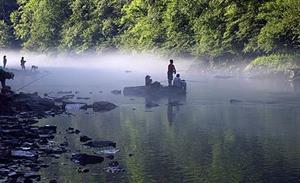
Forty years after its historic inception, the Clean Water Act can be celebrated as a largely successful law that brought tangible improvements to the health of waterways and wetlands throughout the nation. EPA figures show that the number of rivers, lakes, and estuaries safe for fishing and swimming doubled just 25 years after the passage of the Clean Water Act. In 1970, point-source pollution accounted for 85 percent of the pollutants in our waterways; today it accounts for just 15 percent. The annual rate of wetland loss has declined by 90 percent since the 1970s (although the U.S. Fish and Wildlife Service estimates that we still average an annual loss of 13,800 wetland acres). And organic waste discharges from industrial sources have declined by more than 98 percent, according to a report from the Natural Resources Defense Council. Outdoor enthusiasts are fishing, swimming, hunting, and boating in 70 percent of our streams, rivers, lakes, and wetlands. Many of the most notoriously polluted water bodies — including Lake Erie and the Hudson, Upper Mississippi, Potomac, Chattahoochee, Delaware, and Ohio Rivers — have rebounded from being essentially dead to harboring thriving fish and wildlife communities.
Thanks to hundreds of billions of dollars in public and private investments allocated to wastewater treatment, the quality of municipal and industrial effluent — the discharge of liquid waste — is much better. The number of people served by sewage treatment facilities almost doubled between 1968 and 1996, and the improvements to these facilities resulted in a nearly 45-percent decrease in the amount of organic pollutants released into our waters. A 2000 EPA report, Progress in Water Quality: An Evaluation of the National Investment in Municipal Wastewater Treatment, shows that wastewater treatment facility upgrades have had enormously beneficial results, including significant improvements in water quality, wildlife habitat, and recreational usage.
Innovative Thinking
Wastewater improvements have also taken innovative shape with the help of the Clean Water State Revolving Fund (CWSRF) program, which is authorized by Title VI of the Clean Water Act. For example, when Oregon’s Department of Environmental Quality (DEQ) updated TMDLs for ammonia in Pudding River, the community of Woodburn faced a choice: Find a way to decrease ammonia levels in wastewater or find a new place to discharge it. A $20 million CWSRF loan allowed the city to create a wastewater reuse program that accomplishes ammonia reduction and more. The city planted more than 80 acres of poplar trees next to the wastewater treatment plant, and the trees are watered with treated effluent during summer months. The plant has achieved a 75-percent reduction in the amount of wastewater it directly discharges into the river, which has brought concentrations of ammonia in the river to within state limits. In addition, filtering wastewater through the trees removes nitrogen and phosphorus — problematic nutrients that pollute many waters across the country. The poplar forest also provides wildlife habitat, and the city can harvest the trees for a variety of uses. The 2010 Wastewater Facilities Plan for Woodburn includes a recommendation to expand the poplar reuse system by developing an additional 38 acres on city-owned land and 59 acres on purchased land.
Sharing Successes
Clean water successes help inspire future water quality improvements. That’s why River Network, a nonprofit that works with grassroots partners to implement Clean Water Act programs, celebrated the Act’s 40th anniversary with a series of success stories. “By documenting successful approaches to Clean Water Act implementation, monitoring, and enforcement,” says Gayle Killam, deputy director of River Network’s Rivers and Habitat Program, “we can help encourage other states and regions to learn from — and even adopt — new and innovative approaches to their own water quality issues.”
One example is an Ohio program that encourages communities to include “green” and nonstructural projects with their plans for wastewater treatment facility upgrades and similar improvements. To foster this combined approach, Ohio EPA lowers the interest rates on revolving fund loans for structural improvements if the loan applicant also sponsors a project that contributes to the “physical, biological, and chemical integrity” of the local watershed. Interest rates are set so that the applicant’s total project costs are the same as they would have been for the capital improvement alone. Thanks to this program, communities in Ohio have succeeded in protecting and restoring 4,000 acres of riparian lands and wetlands as well as 40 miles of Ohio’s stream corridors. Similar programs have been adopted in Iowa and Oregon.
In another example, the Clean Water Act prevented development that could impair water quality. The Dosewallips River in Washington — classified by the state as Class AA (extraordinary) — is home to threatened salmon and steelhead populations. Estimates showed that a proposed hydroelectric dam could divert up to 75 percent of the river’s water from a section that was important for salmon migration, rearing, spawning, and harvesting. For projects that involve water discharge, Section 401 of the Clean Water Act specifies that applicants for a federal permit or license must obtain certification from the state declaring that water discharge will comply with applicable Clean Water Act provisions, including state water quality standards. The state denied the project Section 401 certification, which meant the project could not move forward. The public utility and city government took the case to the state Supreme Court, then the U.S. Supreme Court, which upheld the authority of the state to impose conditions on Section 401 permits that are reasonably necessary to preserve state water quality standards. This 1994 ruling was upheld in a similar case before the U.S. Supreme Court in 2006, further cementing the rights of states to prevent “adverse alteration” of water quality.
Although we have made significant progress over the past 40 years, much more needs to be done to achieve the promise of the Clean Water Act.
Persistent Challenges
Since the passage of the Clean Water Act, federal and state agencies have had great success in controlling pollution from industrial facilities, municipal waste treatment plants, and other point sources. However, water pollution persists:
- According to EPA’s National Water Quality Inventory: Report to Congress for the 2004 reporting cycle (released in 2009), states reported that 44 percent of rivers, 64 percent of lakes, and 30 percent of estuaries were not clean enough to support uses such as fishing and swimming. Less than 30 percent of U.S. waters were assessed by the states for these reports.
- EPA’s 2005 Wadeable Streams Assessment — which measures the biological condition of some of our nation’s most critical aquatic resources — revealed that 42 percent of streams and small rivers are in “poor” condition while only 28 percent are in “good” condition.
- EPA’s 2010 National Listing of Fish Advisories reported that fish consumption advisories had been issued for 17.7 million lake acres and 1.4 million river miles — including 100 percent of the Great Lakes and their connecting waters — due to chemical contamination.
- EPA’s Toxic Release Inventory (TRI) reports that large-scale agricultural operations and outdated municipal sewage systems dumped more than four billion pounds of toxic chemicals into our waterways in 2011, representing an 8 percent increase in releases from 2010.
Why haven’t we made more headway toward the Clean Water Act’s goals of clean and healthy waterways, zero pollutant discharge, and fishable, swimmable waters? The answer can be found partly in our own backyards.
Excess Nutrients
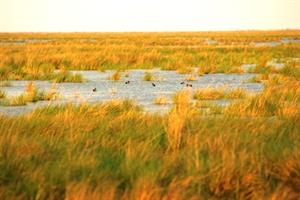
The past 50 years have seen an alarming increase in the amount of nitrogen and phosphorus entering our waterways, threatening both water quality and public health. EPA reports that 30 percent of the nation’s streams have high levels of nitrogen and phosphorus pollution and that drinking water violations for nitrates have doubled in the past 8 years. Significant sources of these nutrients include agricultural runoff, residential and commercial fertilizers, animal waste, and air pollution from utilities and vehicles. Excess nutrients end up in streams and rivers, where they feed an explosion of algal growth. As the algae die and decompose, they can cause drastic depletion in dissolved oxygen levels, effectively suffocating fish and other aquatic life. The ecological, human health, and economic impacts of excess nitrogen and phosphorus have the potential to become one of the most costly and difficult environmental problems facing our nation.
Programs specifically established to address nonpoint-source pollution — including the Nonpoint Source Management Program and the Coastal Nonpoint Pollution Program — have made little progress in stemming the flow of pollutants from nonpoint sources. Because the Clean Water Act does not give EPA authority to directly regulate runoff from farms and municipalities, the responsibility for regulating nonpoint-source pollution has largely rested on the shoulders of state and local authorities. Lack of funding and enforcement, however, have plagued state and local efforts to curb this growing threat.
Minimal Monitoring
Reliable water quality data has also been a problem. Although the assumption is that federal and state agencies know quite a lot about the state of our nation’s waters, this is far from reality. The truth is that only about 19 percent of our nation’s streams and rivers and 43 percent of our lakes, ponds, and reservoirs have been adequately assessed. Not only is the necessary water quality data scarce, numerous federal, state, and local water monitoring efforts occur with little coordination, severely reducing the utility of available data. Without more frequent assessments, citizen participation in the assessment process, and better collaboration with federal water quality and land management agencies, state and local water quality managers simply do not have the tools they need to understand water quality in real time.
Clean Water Under Attack
Rather than focus on effectively assessing the nation’s water quality and solving persistent pollution problems, Congress and the Supreme Court are actively working to undermine the effectiveness of the Clean Water Act.
When the Clean Water Act was signed into law 40 years ago, there was a broad consensus that decisive action was needed to protect “all the waters of the United States.” Although we still have far to go to realize the goals so clearly defined in the Act, we have made remarkable headway towards protecting and cleaning up many of America’s most notoriously polluted waterways. Yet this progress may now be in peril.
Supreme Court Creates Confusion
Two Supreme Court decisions introduced ambiguity over which waterways are protected under the law. In 2001, a divided Supreme Court held that the Corps of Engineers could not assert Clean Water Act jurisdiction over certain geographically isolated ponds based solely on their use by migratory birds. Five years later, the Supreme Court handed down a fractured decision that further muddied the definition of the “waters of the United States.” These decisions left thousands of miles of streams and millions of acres of wetlands without the well-defined Clean Water Act protections that they had enjoyed for almost 30 years. The Bush administration complicated matters further by issuing instructions in 2003 and 2008 that effectively directed EPA and the Corps to withhold Clean Water Act protections for isolated wetlands as well as intermittent and headwater streams and the wetlands adjacent to them.
These Bush administration policy documents (technically known as “guidance”) removed protections for at least 20 million acres of wetlands that store flood waters, filter pollutants, and provide critical fish and wildlife habitat. Included in this imperiled wetland acreage is America’s prairie pothole region, which covers 276,000 square miles of the northern Great Plains and provides vital habitat for migratory waterfowl and other wildlife. More than 2 million miles of streams that provide fish habitat and spawning grounds and feed into the public drinking water systems for more than 117 million Americans are also now at risk under the Bush guidance.
League Fights Back
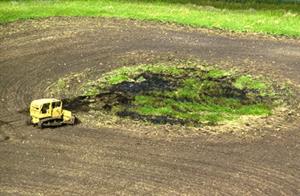
The Izaak Walton League has been working with partner groups to reverse these threats. After legislation to restore lost protections stalled in Congress, our focus shifted to EPA and the Corps of Engineers. We encouraged these agencies to publish revised guidance that would reestablish science-based criteria for determining which waters and wetlands are protected by the Clean Water Act. Thanks in part to League efforts, EPA and the Corps proposed such guidance in April 2011. The League mobilized our members and other sportsmen across the country to submit comments in support of the proposed new guidance. According to EPA, more than 90 percent of the nearly 220,000 individual comments received by the agency supported the proposed guidance. In addition, with active League leadership and coordination, more than 250 groups from 28 states — including more than 130 League chapters and divisions — wrote to EPA and the Corps supporting new Clean Water Act guidance.
Yet Congress repeatedly tried to block new guidance as well as any future rulemaking that would clarify and restore Clean Water Act protections. Annual appropriation bills that fund EPA and the Corps included amendments that would prevent the agencies from issuing guidance and initiating a rulemaking process. The League battled these attempts with an aggressive media and grassroots effort to raise awareness and mobilize opposition.
The League’s persistence paid off. No legislation was signed into law including any provisions to block the Corps and EPA from moving forward on Clean Water Act guidance. The League has and will continue to oppose additional attacks from Congress and urge the Obama administration to finalize and implement the guidance. However, the draft guidance has been on hold at the White House Office of Management and Budget for almost a year — likely a product of political pressure from Capitol Hill and election year caution by the president. Once approved by the White House, this new guidance would replace current policy guidelines that leave small streams critical to the nation’s drinking water and millions of acres of wetlands unprotected.
The League is working with partner groups to coordinate outreach to the Obama administration — and your voice is critical to ensuring this important message is heard. Sign up for League Action Alerts today and look for updates on Clean Water Act guidance.
Join the Battle
Over the past 40 years, tremendous progress has been made toward safeguarding wetlands and waterways that are critical to our nation’s health and prosperity. Yet today, that progress is at risk. The Izaak Walton League is working to re-invigorate and galvanize the support needed to keep Clean Water Act protections for America’s waters intact. But we cannot do it alone. Restoring America’s water quality requires full participation and engagement at all levels of society — including a strong federal framework that establishes overarching goals that integrate all aspects of water resource protection, strong enforcement and implementation by states, and active citizen involvement. Your help is needed to ensure that America’s wetlands and waterways continue to sustain us and to inspire us far into the future.
Whether you reach out to Congress, participate in a stream monitoring program, or engage a classroom of kids in conservation projects, you can make an important contribution toward protecting our streams and wetlands for future generations.
Save a Stream
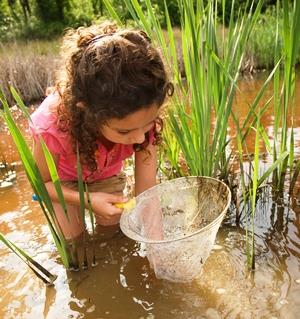
Citizens in every state have the right to know whether the water in their streams is safe for drinking, fishing, and swimming. By joining citizen science projects like the Izaak Walton League’s Save Our Streams (SOS) program, community members can get directly involved in the effort to protect and restore the health of their local waters. The League launched the SOS program more than 40 years ago, and League members and supporters continue to use it to improve water quality and foster citizen engagement.
All over the country, community members young and old are getting involved in Save Our Streams projects that are not only fun but provide a rich learning experience in the giant living classroom right outside our front doors. From watershed clean-up events to streamside tree plantings, the League’s Save Our Streams program offers a wide range of project ideas that can get you and your community started on a path toward healthy and thriving streams and wetlands as well as a deeper awareness of how our own neighborhoods are intimately connected to these waters.
Save Our Streams volunteers not only promote watershed conservation through local education and outreach activities, they also contribute valuable water quality data to state agencies. By sampling and recording the range of critters that live in local streams, volunteer monitors across the country have provided important information about the health of their waterways to the state and local agencies charged with protecting these waters.
You can join the thousands of volunteers who are making a difference in their communities. Visit the League’s SOS Web page at http://www.iwla.org/SOS.
Become a Youth Leader
What better way to ensure the future of our wetlands and waters than by introducing children to the beauty and natural diversity of waterways in their own neighborhoods? Whether you team up with a community stream restoration project, join in an educational tour of a state or national park, or bring your child to experience wetland wildlife at your local zoo, hands-on experience is one of the best ways to teach kids about the importance of wetland ecosystems.
The League’s Creek Freaks initiative allows youth to learn about and actively participate in the conservation of local streams and wetlands. Creek Freaks connects youth with the outdoors not by telling them to choose between technology and outdoor play but by harnessing technology to forge those connections. The Creek Freaks Web site provides a wealth of educational information on waterways and tools for sharing water quality data across the nation. Youth and adults can also post photos and videos of “their” creeks to the Web site. Just as important, Creek Freaks can post their water quality ratings and track changes in data — and visitors can check data for waterways in the Creek Freaks system.
Creek Freaks builds on the League’s decades of success monitoring water quality and engaging citizens in grassroots advocacy. Whether you want to start a new youth program or expand a program already underway, Creek Freaks is an excellent opportunity to share your love of the outdoors with kids in your community. Visit our Creek Freaks Web site.
Speak for the Rivers
There are many ways to advocate for responsible stewardship of our waterways. Whether your talents are better served by writing a letter to your member of Congress or volunteering as a speaker for local community groups, you can use your voice to support the rivers, streams, and wetlands that sustain the communities, economies, and ecosystems that make our nation unique. Learn more about how you can support the Clean Water Act guidance and other conservation priorities by visiting the League’s Protecting Clean Water Web page.
By becoming a part of the League campaign to make clean water protection a national conservation priority, you can help build stronger connections within your community and its surrounding natural environment. And perhaps you will find that you have contributed something else as well — something just as important. The next time you cast your line into the dawnlit waters of your local trout stream, watch your child frog hunting amid the rustling marsh grasses, or listen to the chorus of birdsong rising from a nearby beaver pond, perhaps you will be able to rest more assured that these voices will continue to be heard for generations to come.